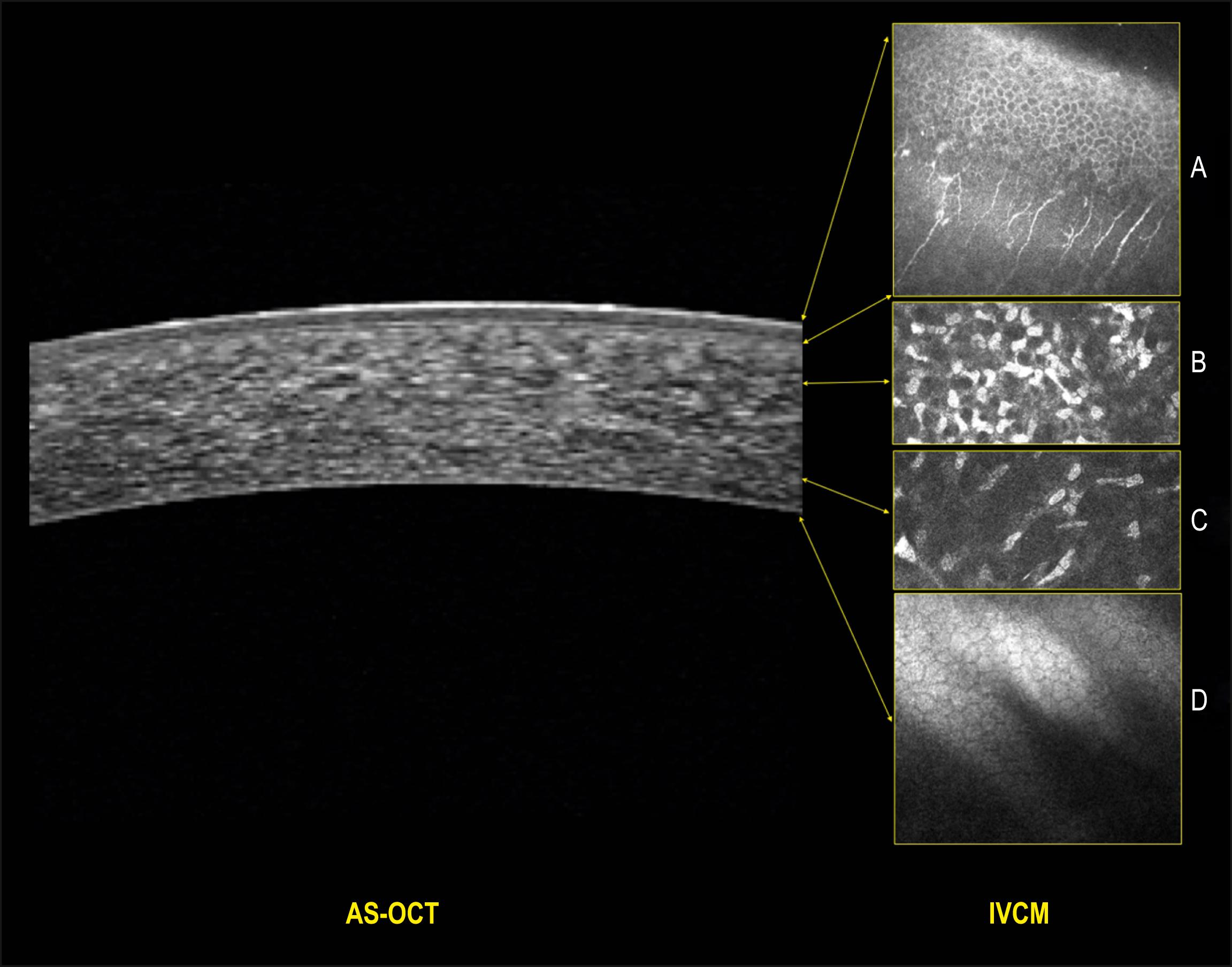Physical Address
304 North Cardinal St.
Dorchester Center, MA 02124
In vivo confocal microscopy (IVCM) is a high-resolution imaging technique that enables microscopic examination of the ocular surface with good histopathologic correlation.
IVCM is useful for the early diagnosis and monitoring of infectious keratitis from fungi and Acanthamoeba with high sensitivity and specificity.
The in vivo evaluation of nerve terminals allows identification of the relationship between corneal neuropathic compromise and systemic involvement in diseases such as diabetes mellitus.
IVCM has potentially numerous applications in ophthalmology both for understanding physiologic or healing processes and for the detection of early and subtle pathologic changes.
In vivo confocal microscopy (IVCM) is a noninvasive high-resolution image-acquisition technique that was developed by Minsky in 1955 and began as a technique used in research. However, it has become a highly useful clinical diagnostic tool, enabling the acquisition of images of the corneal microstructure with resolution close to 1 μm. ,
The basic principle of the confocal microscope, put simply, is that a point of tissue is illuminated by a single point of light and, simultaneously, the image is detected and focused by an objective lens to a point conjugate with the same point in the tissue; hence the term confocal . By this same principle, the image obtained corresponds to a very small area of the examined tissue but with the advantage of achieving a very high resolution.
The confocal microscope is capable of imaging all layers of the cornea ( Fig. 15.1 ), nerves, and different cell types including epithelial cells, keratocytes, endothelial cells, leukocytes, dendritic cells, or Langerhans cells. , It includes software that allows a cell count in all layers of the cornea.

The early diagnosis of the causative agent of infectious keratitis allows more timely treatment and therefore a better visual prognosis. , ,
In the case of viral infection, due to the small size of the virus, the resolution of the confocal microscope does not allow visualization of the pathogen. However, it is possible to evaluate the presence of subepithelial infiltrates after an adenoviral keratoconjunctivitis, where hyperreflective central structures such as numerous Langerhans cells are observed in the basal layer of the epithelium. Active keratocytes and inflammatory cells have been observed in the middle and anterior stroma. ,
In cases of herpes simplex keratitis, giant epithelial cells, dense fibrosis, and absence of the subbasal nerve plexus have been reported. The decrease of dendritic cells is an indirect sign of recovery. ,
In the case of bacteria (1.5–2 μm), the microbes are poorly visualized. However, there are some reports where IVCM has shown utility. Examples include Nocardia asteroides, Borrelia , Microsporidia Streptococcus viridans , Staphylococcus warneri , and Pseudomonas aeruginosa . , ,
IVCM allows real-time diagnosis of Acanthamoeba with a sensitivity between 90.9% and 100% and a specificity between 77.3% and 100%.
Amoeba cysts are visible as highly hyperreflective rounded or ovoid double-walled structures with a diameter of 10–26 μm that may be present in epithelium or corneal stroma ( Fig. 15.2 ). The trophozoites are hyperreflective structures of variable size and shape measuring between 23–25 by 11–19 μm, but they may be difficult to differentiate from inflammatory cells or keratocytes. Radial keratoneuritis can be observed as areas of larger and irregular nerve fibers. , , , ,

With this imaging technique it is possible to evaluate the therapeutic response and define the endpoint of treatment, thus avoiding unnecessary exposure to further treatment measures.
Become a Clinical Tree membership for Full access and enjoy Unlimited articles
If you are a member. Log in here